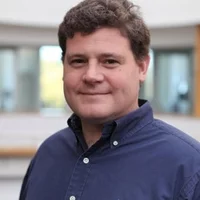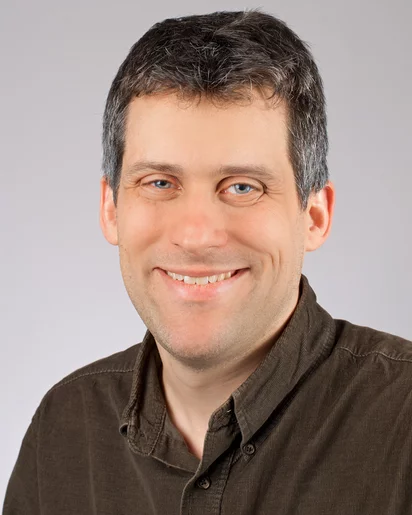Professorships
Biography
Steven Johnson is professor of physics at ETH Zurich and head of the experimental “pump” laser group within the laboratory for nonlinear optics (LNO) in the photon science division (PSD) of PSI. He acquired a BSc in mathematics and physics from Harvey Mudd College, and a PhD in physics from the University of California at Berkeley. He then worked as a staff scientist at PSI for several years, where he participated in the construction, commissioning and scientific development of the femtosecond electron-beam slicing x-ray source at the Swiss Light Source. After this Steven Johnson moved to the nearby ETH Zurich to found a new research group with a focus on ultrafast dynamics in condensed matter systems. The activities of this group are now performed in close collaboration with the pump laser group at PSI. He is an active member of the x-ray user community and sits in numerous advisory committees. Steven Johnson also participates in several international research collaborations in his research area.
Institutional Responsibilities
The planning, funding and management of the ultrafast laser infrastructure for pump-probe experiments at SwissFEL. This includes defining, in cooperation with partners within and outside of PSI, new capabilities for the experimental laser system that will enable new science at SwissFEL. The experiment laser group he manages consists of several staff scientists with their own independent research directions in diverse areas of application for SwissFEL in biology, chemistry and physics. The group works closely with other groups at PSI to support cutting-edge user experiments at SwissFEL.
Scientific Research
Steven Johnson’s research interests focus on understanding and using light-matter interactions to investigate and control the properties of solid-state materials. One current area of focus is the use of coherent vibrational excitations to drive metastable changes in materials, with an emphasis on strongly correlated systems. He is also highly interested the the development of new experimental techniques to quantitatively measure atomic-scale structural dynamics in a variety of physical systems, including nonlinear x-ray methods made possible at facilities like SwissFEL. Another, complementary area of current research is in the interaction of high-field THz and mid-IR light with solids as a way of controlling structural and electronic properties. More information on these topics can be found at the ETH Zurich group home page.
Selected Publications
For an overview of Steven Johnson’s PSI-related publications we refer you to our publication repository DORA. A more comprehensive list including publications before he joined PSI is available at publons.
The Ultrafast Einstein-De Haas Effect, C. Dornes, Y. Acremann, M. Savoini, M. Kubli, M. J. Neugebauer, E. Abreu, L. Huber, G. Lantz, C. A. F. Vaz, H. Lemke, E. M. Bothschafter, M. Porer, V. Esposito, L. Rettig, M. Buzzi, A. Alberca, Y. W. Windsor, P. Beaud, U. Staub, D. Zhu, S. Song, J. M. Glownia, S. L. Johnson. Nature 565, 209 (2019).
A pump-probe experiment performed at the LCLS free electron laser used femtosecond x-ray diffraction to measure significant angular momentum transfer from ferromagnetically ordered spins to the lattice in a laser-excited iron film on a time scale less than 200 fs. This resolves a long-standing puzzle in ultrafast science on understanding how strong optical excitiaton can demagnetize several different transition metal ferromagnets on femtosecond time scales.
Photoinduced transtions in magnetoresistive manganites: A comprehensive view, V. Esposito, L. Rettig, E. Abreu, E. M. Bothschafter, G. Ingold, M. Kawasaki, M. Kubli, G. Lantz, M. Nakamura, J. Rittmann, M. Savoini, Y. Tokura, U. Staub, S. L. Johnson, and P. Beaud. Phys. Rev. B 97, 014312 (2018).
A time-dependent order parameter for ultrafast photoinduced phase transitions, P. Beaud, A. Caviezel, S. O. Mariager, L. Rettig, G. Ingold, C. Dornes, S-W. Huang, J. A. Johnson, M. Radovic, T. Huber, T. Kubacka, A. Ferrer, H. T. Lemke, M. Chollet, D. Zhu, J. M. Glownia, M. Sikorski, A. Robert, H. Wadati, M. Nakamura, M. Kawasaki, Y. Tokura, S. L. Johnson and U. Staub, Nature Materials 13, 923-927 (2014).
Mixed-valence manganties are well known for rich phase diagrams with many different types of mangetic, electronic and structural orderings that arise from strongly competing kinds of interactions. A study of the long-range structural dynamics in several manganites used time-resolved x-ray diffraction techniques to track the time evolution of the structural, orbital and charge order parameters of a phase transition. The results are consistent with a model where the phase transition is characterized by a single time-dependent order parameter with coupling to the experimentally observed orders, suggesting a possibly universal way to understand such phase transitions in the time domain.
Coupling between a charge density wave and magnetism in a Heusler material, G. Lantz, M. Neugebauer, M. Kubli, M. Savoini, E. Abreu, K. Tasca, C. Dornes, V. Esposito, J. Rittmann, Y. W. Windsor, P. Beaud, G. Ingold and S. L. Johnson. Phys. Rev. Lett. 119, 227207 (2017).
The connection between structure and magnetism in the prototypical shape memory alloy Ni2MnGa is studied using a combination of optical and x-ray methods with femtosecond time resolution. We discovered that the magnetism and charge density order are indeed coupled, with our data indicating that an ultrafast demagnetization process changes the periodicity of the CDW in this system. The results provide new insights into possible microscopic mechanisms of how magnetic shape memory alloys work.
Coherent phonon spectroscopy of non-fully symmetric modes using resonant terahertz excitation, T. Huber, M. Ranke, A. Ferrer, L. Huber, and S. L. Johnson. Appl. Phys. Lett. 107, 091107 (2015).*
A new apparatus for measuring the low-frequency vibrational modes for materials without an inversion center of symmetry is presented and demonstrated. The method works by measuring small changes in the reflectivity (both isotropic and anisotropic) at near-optical frequencies induced by a broadband THz-frequency pulse that excites modes in the material. The method is most advantageous over existing techniques in materials where the far-infrared absorption changes by several orders of magnitude over a short frequency interval, a situation that often arises for materials with strong high-Q electric dipole active resonances. Accurate knowledge of the dynamics of these low-frequency modes is essential for applications involving vibrational control over materials.
Large-Amplitude Spin Dynamics Driven by a THz Pulse in Resonance with an Electromagnon, T. Kubacka, J. A. Johnson, M. C. Hoffmann, C. Vicario, S. de Jong, P. Beaud, S. Grübel, S.-W. Huang, L. Huber, L. Patthey, Y.-D. Chuang, J. J. Turner, G. L. Dakovski, W.-S. Lee, M. P. Minitti, W. Schlotter, R. G. Moore, C. P. Hauri, S. M. Koohpayeh, V. Scagnoli, G. Ingold, S. L. Johnson, and U. Staub. Science 343, 6177 (2014).
In an experiment performed in collaboration with groups at the Paul Scherrer Insitute (PSI) and the Stanford Linear Accelerator Center (SLAC), we demonstrated that large-scale coherent spin control of the antiferromagnetic structure of multiferroic TbMnO3 is possible, as previously suggested by theory. This result indicates the feasibility of fast switching of the magnetic and ferroelectric order in induced multiferroics with electromagnons (coupled modes of spin and lattice) on picosecond time scales, which could form the basis for new types of magnetoelectric memory devices that function on time scales several orders of magnitude as currently available.
*This publication is not affiliated with PSI


